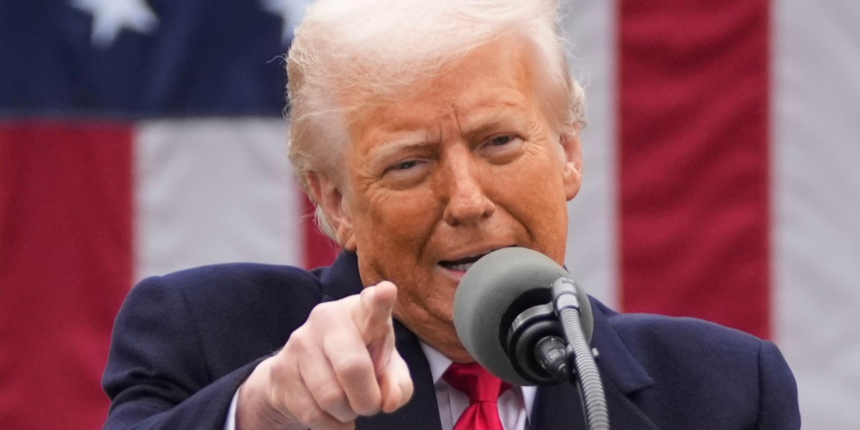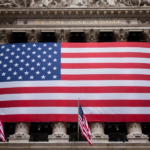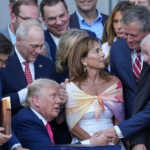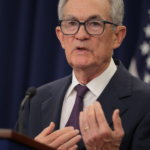US President Donald Trump said his administration will probably start notifying trading partners Friday of the new US tariff on their exports effective Aug. 1, while reiterating a preference for simplicity over complicated negotiations five days before his deadline for deals.
Trump told reporters that about “10 or 12” letters would go out Friday, with additional letters coming “over the next few days.”
“By the ninth they’ll be fully covered,” Trump added, referring to a July 9 deadline he initially set for countries to reach deals with the US to avoid higher import duties he has threatened. “They’ll range in value from maybe 60 or 70% tariffs to 10 and 20% tariffs,” he added.
The top tier of his new tariff range, if formalized, would be higher than any of the levies the president initially outlined during his “Liberation Day” rollout in early April. Those varied from a 10% baseline tariff on most economies up to a maximum of 50%. Trump didn’t elaborate on which countries would get the tariffs or whether that meant certain goods would be taxed at a higher rate than others.
Trump said that countries would “start to pay on Aug. 1. The money will start going to come into the United States on August 1.” Tariffs are typically paid by the importer, or an intermediary acting on the importer’s behalf. But often it’s profit margins or the end consumer that ultimately absorb much of the cost.
Trump has long threatened that if countries fail to reach deals with the US before next week’s deadline, he would simply impose rates on them, raising the stakes for trading partners that have rushed to secure agreements with his administration.
He initially announced his higher so-called “reciprocal” tariffs on April 2, but paused those for 90 days to allow countries time to negotiate, putting in place a 10% rate during that interval.
Bloomberg Economics estimates that if all reciprocal tariffs are raised to their threatened level on July 9, average duties on all US imports could climb to around 20% from close to 3% before Trump’s inauguration in January. That would add to growth and inflation risks for the US economy.
Asked Thursday if more deals were on the way, Trump responded that “we have a couple of other deals, but you know, my inclination is to send a letter out and say what tariffs they are going to be paying.”
“It’s much easier,” he said. “I’d rather just do a simple deal where you can maintain it and control it.”
Trump announced the Vietnam deal on Wednesday, saying that the US would place a 20% tariff on Vietnamese exports to the US and a 40% rate on goods deemed transshipped through the nation — a reference to the practice whereby components from China and possibly other nations are routed through third countries on their way to the US.
While the rates are lower than the 46% duty Trump imposed on Vietnam initially, they are higher than the universal 10% level. And many of the particulars of the deal are still unclear, with the White House yet to release a term sheet or publish any proclamation codifying the agreement.
Many major trading partners, however, such as Japan, South Korea and the European Union, are still working to finalize their accords.
The US president has expressed optimism about reaching an agreement with India but has spoken harshly about the prospects of an accord with Japan, casting Tokyo as a difficult negotiating partner. He intensified his criticism this week, saying that Japan should be forced to “pay 30%, 35% or whatever the number is that we determine.”
Trump on Tuesday also said he was not considering delaying next week’s deadline. Asked about any potential extension of talks, US Treasury Secretary Scott Bessent said earlier Thursday that Trump would make the final call.
“We’re going to do what the president wants, and he’ll be the one to determine whether they’re negotiating in good faith,” Bessent said on CNBC when asked whether the deadline might be lengthened.









